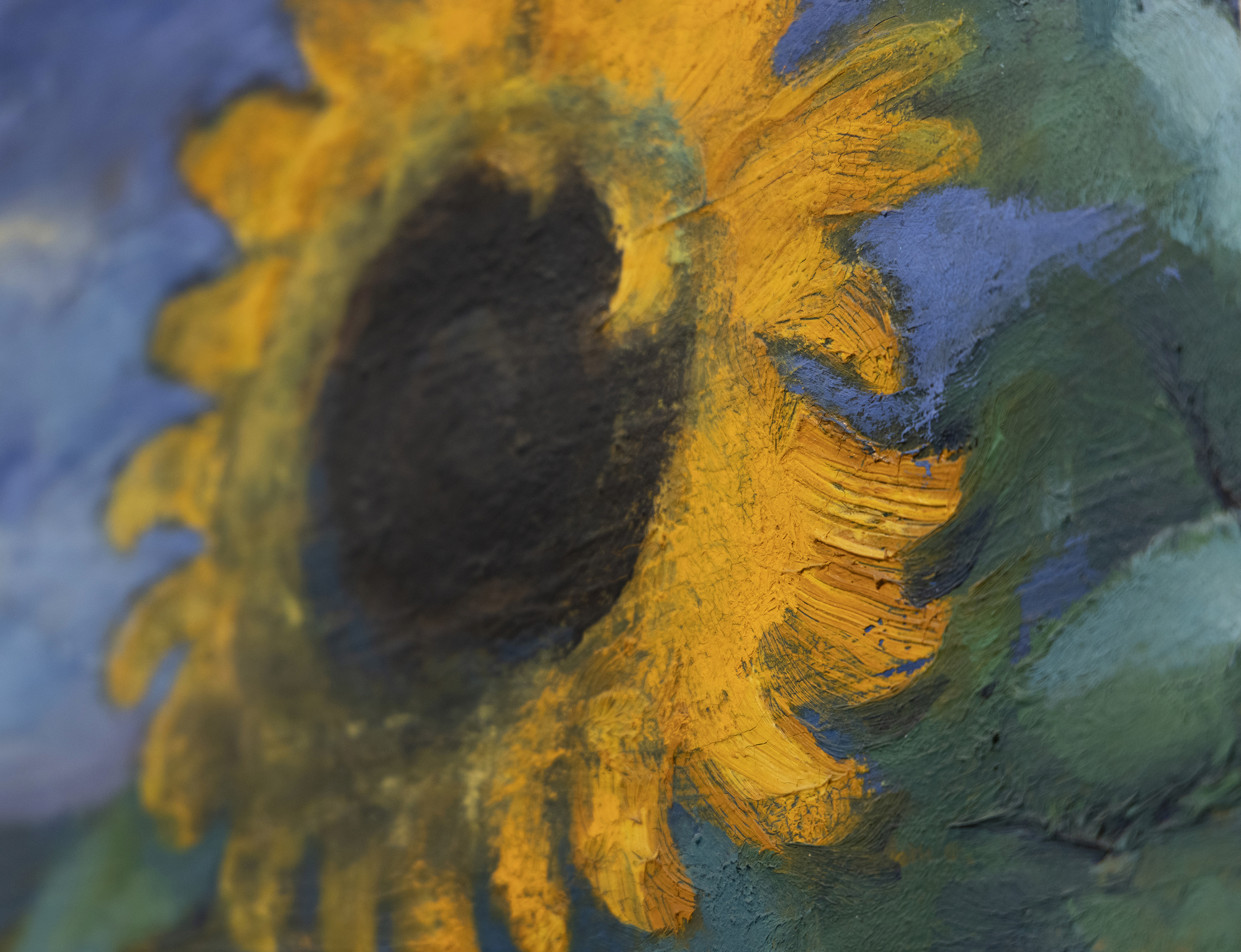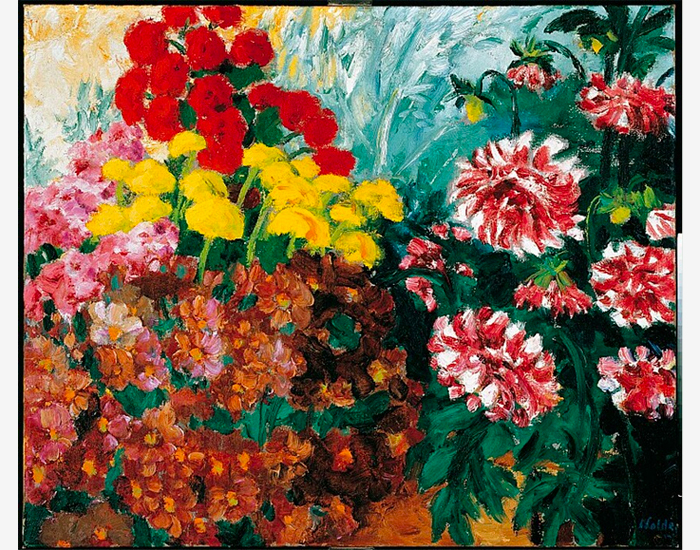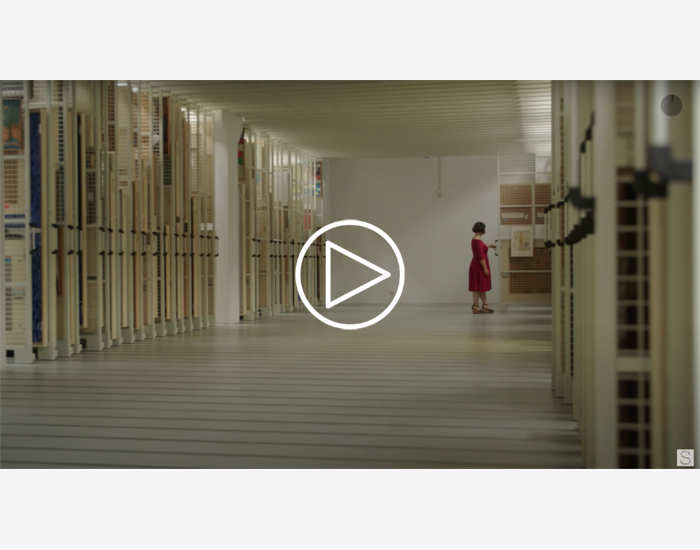EMIL NOLDE (1867-1956)










Provenance
Joachim von Lepel, Neukirchen, 1958Private Collection, Germany
Sotheby's New York, Impressionist & Modern Art Evening Sale: Tuesday, November 2, 2010, Lot 00021
Private Collection, New York
Literature
Martin Urban, Emil Nolde, Catalogue Raisonné of the Oil Paintings, Vol. Two, 1915-1951, London, 1990, no. 1250, illustrated p. 511History
Trained as a woodcarver, Emil Nolde was almost 30 years old before he made his first paintings. The early paintings resembled his drawings and woodcuts: grotesque figures with bold lines and strong contrasts. The style was new, and it inspired the nascent movement Die Brücke (The Bridge), whose members invited Nolde to join them in 1906. But, it was not until the garden became his locus operandi by 1915 that he built upon his mastery of contrasting luminosities to focus on color as the supreme means of expression. Later, Nolde claimed “color is strength, strength is life,” and he could not have better characterized why his flower paintings reinvigorate our perception of color.
Much of the strength of Nolde’s dramatic, Wagnerian-like color sensibilities is the effect of staging primary colors, such as the deep reds and golden yellows of Sonnenblumen, Abend II, against a somber palette. The contrast highlights and deepens the luminosity of the flowers, not just visually, but emotionally as well. In 1937, when Nolde’s art was rejected, confiscated, and defiled, his paintings were paraded as “degenerate art” throughout Nazi Germany in dimly lit galleries. Despite that treatment, Nolde’s status as a degenerate artist gave his art more breathing space because he seized the opportunity to produce more than 1,300 watercolors, which he called “unpainted pictures.” No novice in handling watercolor, his free-flowing style of painting had been a hallmark of his highly-charge, transparent washes since 1918. Sonnenblumen, Abend II, painted in 1944, is a rare wartime oil. He let his imagination run wild with this work, and his utilization of wet-on-wet techniques heightened the drama of each petal.
Nolde’s intense preoccupation with color and flowers, particularly sunflowers, reflects his continuing devotion to van Gogh. He was aware of van Gogh as early as 1899 and, during the 1920s and early 1930s, visited several exhibitions of the Dutch artist’s work. They shared a profound love of nature. Nolde’s dedication to expression and the symbolic use of color found fullness in the sunflower subject, and it became a personal symbol for him, as it did for Van Gogh.
MARKET INSIGHTS
- Fully realized sunflower paintings are rarely available, and most of the works of this subject are in museum institutions.
- When flower paintings have come up for auction, they have been among some of Nolde’s highest-selling works.
- As the graph from Art Market Research illustrates, Emile Nolde’s market has appreciated 648.1% since 1976.
Top Results at Auction

"Herbstmeer XVI" (1911) sold for $7,344,500.

"Indische Tänzerin" (1917) sold for $5,262,500.

"Rotblondes Mädchen" (1919) sold for $3,826,851.

"Sonnenuntergang" (1909) sold for $3,517,759.
Comparable Paintings Sold at Auction

"Meer I" (1947) sold for $3,132,800.
- Painted three years after Sonnenblumen, Abend II
- Slightly smaller than Sonnenblumen, Abend II
- Rather than florals, Meer I is a seascape, another subject that Nolde frequently revised during this period

"Kleine Sonnenblumen" (1946) sold for $3,042,500.
- Painted two years after Sonnenblumen, Abend II
- Slightly smaller than Sonnenblumen, Abend II
- Also features a sunflower subject
- This painting was included in the 2014 Nolde retrospective at the Louisiana Museum of Modern Art, Denmark

"Üppiger Garten" (1945) sold for $2,658,500.
- Painted one year after Sonnenblumen, Abend II
- Slightly larger than Sonnenblumen, Abend II
- While not a depiction of sunflowers, Üppiger Garten is a similar tightly cropped floral landscape

"Grosse Sonnenblume und Clematis" (1943) sold for $2,179,094.
- Painted one year before Sonnenblumen, Abend II
- Slightly smaller than Sonnenblumen, Abend II
- Same sunflower subject







































